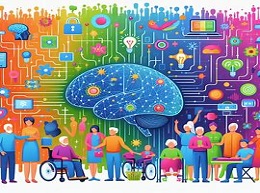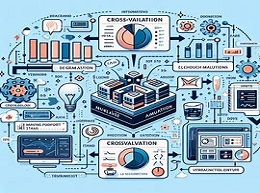Exploring AutoML: Automated Machine Learning Techniques

Automated Machine Learning (AutoML) has emerged as a game-changer, democratizing the machine learning landscape by automating complex tasks and enabling even non-experts to build powerful models. This article serves as an in-depth exploration of AutoML, unraveling techniques, showcasing examples, and envisioning a future where machine learning becomes effortlessly accessible.
1. The Rise of AutoML: Revolutionizing Model Development:
Embark on a journey into the realm of Automated Machine Learning. Understand the driving forces behind its rise and the transformative impact it has on democratizing machine learning.
2. Traditional Machine Learning Workflow: A Manual Odyssey:
Explore the traditional machine learning workflow, highlighting the manual steps involved in data preprocessing, feature engineering, model selection, and hyperparameter tuning. Recognize the challenges and complexities that AutoML aims to address.
Example: The manual process of hyperparameter tuning, where data scientists iteratively adjust parameters to optimize model performance.
3. Automated Data Preprocessing: From Raw to Refined:
Delve into how AutoML automates data preprocessing tasks. Explore techniques for handling missing data, scaling features, and encoding categorical variables without manual intervention.
Example: AutoML tools imputing missing values and standardizing features, enhancing data quality.
4. Feature Engineering with Machine Intelligence: Unleashing Creativity:
Explore how AutoML leverages machine intelligence for feature engineering. Understand its ability to automatically generate and select relevant features, eliminating the need for manual feature crafting.
Example: AutoML identifying important interaction terms or creating new features based on existing ones.
5. Model Selection: Let Algorithms Compete:
Uncover the automated model selection process in AutoML. Discuss how algorithms compete against each other, automatically iterating through various models to find the most suitable one for the given dataset.
Example: AutoML comparing the performance of algorithms like Random Forest, Gradient Boosting, and Neural Networks.
6. Hyperparameter Tuning: The Art of Optimization:
Delve into the automated optimization of hyperparameters. Explore how AutoML tools use optimization algorithms to fine-tune model parameters, achieving optimal performance without manual intervention.
Example: AutoML adjusting learning rates, tree depths, and regularization parameters to optimize a model's predictive power.
7. Ensemble Learning: Combining Forces for Superior Results:
Explore how AutoML employs ensemble learning techniques to combine multiple models, enhancing predictive accuracy. Understand the automated creation of model ensembles for robust and reliable results.
Example: AutoML creating an ensemble by combining predictions from various models to achieve better generalization.
8. AutoML in Action: Real-world Applications:
Highlight real-world applications of AutoML across industries. From finance to healthcare, showcase examples where automated machine learning has demonstrated its efficacy in solving complex problems.
Example: AutoML automating the development of predictive models for credit scoring in the finance industry.
9. Challenges and Considerations: Navigating the AutoML Landscape:
Examine challenges and considerations associated with AutoML. Discuss potential limitations, interpretability issues, and the importance of maintaining a balance between automation and human expertise.
Example: The challenge of interpreting complex models generated by AutoML, requiring attention to transparency and accountability.
AutoML has ushered in a new era of accessibility and efficiency in machine learning. By automating intricate tasks, it empowers both novices and experts to focus on the broader aspects of model development. The journey into AutoML is a transformative one, where the future holds the promise of making machine learning more approachable and impactful.
Embark on a journey into the transformative world of AutoML. Explore techniques, examples, and the future of hands-free model development in revolutionizing machine learning.














